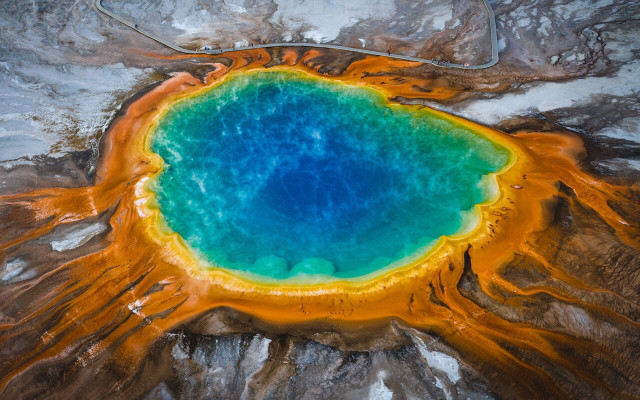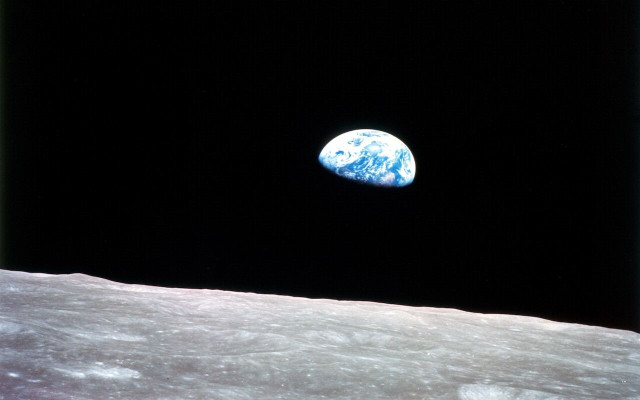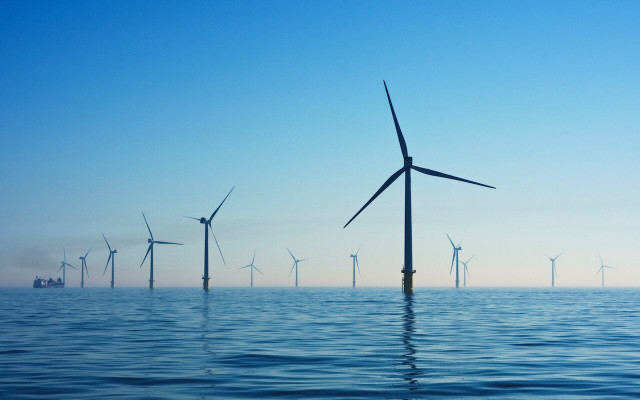The history of environmentalism is as long as it is fascinating. Let’s take a closer look at environmentalism history to understand the importance of this social movement.
Environmentalism is both a social movement and a philosophy that advocates for the preservation, restoration and improvement of the natural environment with a focus on the climate and biodiversity. It involves a concern for the impact of human activities on the Earth and its inhabitants.
The ultimate goal of environmentalism is for humans and the natural world to coexist in harmony and sustainability. Those who consider themselves environmentalists look to influence legislation through lobbying, activism and education about the impact of human activity on the natural environment.
This concept is nothing new. Let’s take a look at the history of environmentalism to get a better understanding of how this movement was born.
Pre-Modern Environmentalism History

The stewardship of the natural environment existed long before modernization and the Industrial Revolution. There is evidence that it existed in both ancient and early Indigenous cultures. Humans have always relied on natural resources for survival, but those who lived integrated with the environment understood the concept of the “balance of nature.”
Early Indigenous groups
Early Indigenous groups could be considered the world’s first environmentalists. An emphasis on the connection between humans and their environment and the philosophy of taking only what you need are central tenets of many environmentalist practices. Not only did such systems allow early Indigenous groups to thrive in pre-modern times, the traditional ecological knowledge passed down to contemporary Indigenous groups is now more valuable than ever.
Ancient China
The concept of environmental accountability is said to have been born in ancient China, where many practices and philosophies pointed toward a balance and harmony with nature.
- In the Xia dynasty, there were water control campaigns led by Dayu and environmental protection legislation put in place to prevent people from chopping wood during trees’ period of growth in the springtime. There was also a ban on catching fish when populations were growing.
- In the Qing dynasty, there are records of an environmental protection ministry known as “Yu”.
To this day, Chinese knowledge of the environment is still being used and can be seen in the practices of traditional Chinese medicine (TCM).
Shifting Towards Modern Environmentalism in the 1800s



Many will argue that modern environmentalism was born out of the Industrial Revolution and colonization. As society shifted away from agriculture in favor of industrialization, the effects of industry on the environment became apparent. For example, factories started polluting the air and water and taking up large amounts of land. During this time, there was a growing concern about the impact of human activities on the environment.
Early pioneers of environmentalism
- Henry David Thoreau is credited with the philosophy of environmental stewardship. His book, Walden, discussed the negative impact industrialization has on the environment and inspired generations of environmental activists.
- John Muir, also known as the “Father of the National Parks”, played a key role in developing the National Park System in the United States. His passion for the wilderness pushed him to found the Sierra Club, a nonprofit dedicated to environmental conservation.
- George Perkins Marsh published his book “Man and Nature” in 1864, which is considered to be one of the earliest works of modern environmentalism. In it, he discusses how human activities such as deforestation and agriculture negatively impact the environment and contribute to climate change and soil erosion, among other issues.
Establishment of National Parks
The establishment of National Parks and conservation areas signified an increasing interest in preserving natural areas and promoting conservation. The establishment of Yellowstone National Park in 1872 was a huge environmentalist project — more than 2 million acres of wilderness were protected. This was followed by Yosemite National Park and Sequoia National Park in 1890, Mount Rainer in 1899, and Crater Lake in 1902. In 1916, the National Parks Service was created, and more parks were added.
You might also enjoy: The 16 Natural Wonders of the US You Need to See in 2023
The Start of Environmental Awareness and the Environmental Movement



Environmentalism as we know it today really took off in the 1960s and 1970s when it became a mainstream social and political movement. It was during this time that public concern about environmental issues grew significantly, and environmental activism started to spring up in various forms, including protests, lobbying, information campaigns and teach-ins.
Significant events of the 1960s
- Rachel Carlson’s book “Silent Spring” was published in 1962. It warned about the dangers of pesticide use and its impact on the natural world.
- “The Quiet Crisis” was published by Secretary of the Interior, Stewart Udall, in 1963, as an early call to arms on environmental pollution.
- The first list of endangered species was released in 1967, which included the US national animal — the bald eagle.
- The first photograph of Earth from space was taken by the crew of Apollo 8 in 1968. This image becomes the iconic image of the environmental movement.
- The Cuyahoga River in Ohio caught on fire in 1969 due to the amount of pollutants in it. This brought attention to water pollution issues and laid the groundwork for the Clean Water Act and the Great Lakes Water Quality Agreement.
Significant events of the 1970s
- The National Environmental Policy Act (NEPA) was passed by Congress in 1970.
- The first Earth Day was celebrated on April 22, 1970, as a protest with an estimated 20 million participants nationwide.
- Both the Natural Resources Defense Council (NRDC) and the Environmental Protection Agency (EPA) were established in the summer of 1970. The National Oceanographic and Atmospheric Administration (NOAA) was established later that year.
- 1972 was a year of legislation with the Clean Water Act (CWA), the Marine Mammal Protection Act (MMPA) and the Coastal Zone Management Act being brought in. DDT was also banned this same year.
- In 1973, Congress passed the Endangered Species Act.
- In 1975, the Eastern Wilderness Areas Act was created to protect over 200,000 acres of National Forests.
- A report was released in 1976 by the US Academy of Sciences that provided evidence to support the hypothesis of ozone depletion.
This environmental movement continues gaining traction and has been successful in many ways. Environmental activism and advocacy have paved the way for the development of international agreements with regard to climate change, conservation and the protection of biodiversity.
Recommended read: “No Credible Pathway” to Keep Temperature Rise Below 1.5C. What Now?
Modern Environmentalism History



The environmental movement that kicked off in the 60s and 70s was critical in leading us to what’s referred to as modern environmentalism. This extensive philosophy/social movement focuses on the preservation, restoration and improvement of the natural processes and environments that make our planet unique. The ultimate aim is for humans to live alongside nature harmoniously and sustainably.
The issues faced early in the century haven’t changed, but they have evolved. In the last several decades, topics like global warming, overpopulation, genetic engineering, non-renewable energy and plastic pollution have become more critical.
The release of “An Inconvenient Truth” in 2006 played an integral role in educating the public about the climate crisis and reigniting the environmentalism flame sparked during the 1960/70s. Some critics say that the documentary oversimplifies certain aspects of climate change while exaggerating the consequences of global warming. Still, it started a conversation that continued into the following decade.
Key multilateral environmental protocols and agreements
- 1987: The Montreal Protocol on Substances that Deplete the Ozone Layer
- 1989: The Basel Convention on the Control of Transboundary Movements of Hazardous Wastes and Their Disposal
- 1993: The United Nations Framework Convention on Climate Change (UNFCCC)
- 1993: The Convention on Biological Diversity (CBD)
- 1997: The Kyoto Protocol, an amendment to the UNFCCC
- 2016: The Paris Agreement
Turning toward renewable energy & sustainability
Driven by concerns about the effects of fossil fuels and greenhouse gas emissions on the environment, there has been a shift towards renewable energy sources. This allows local governments to drastically decrease their carbon footprints and reduce their reliance on imported oils and fuels. Governments around the world are shifting subsidies away from non-renewable energy sources and are choosing to invest in solar, wind, biomass fuels and tidal energy.
Looking Towards the Future



As we look toward the future of environmentalism, there are key issues at the core of the movement which will require significant attention and effort. The following list is not exhaustive, as each bioregion has its own issues to deal with — but it’s worth noting that these issues are primarily caused by human activities:
- Global warming and climate change caused by greenhouse gas emissions
- Poor water quality and scarcity
- Threats to biodiversity and habitat destruction caused by deforestation and pollution
- Plastic pollution in oceans and waterways, which are damaging to marine ecosystems
- Negligence in waste management, leading to ocean and land pollution, among other environmental issues
- Overpopulation and resource depletion of fossil fuels and other non-renewable resources
- Air pollution caused by transportation and big industry
- Extinction and endangerment of wildlife species
As technology becomes further integrated into our daily lives, it’s important to look at the relationship between technology and environmentalism to understand its role. Some see environmental technology as a potential solution to the issues our planet is facing, while others argue that it further contributes to environmental degradation.
Where these two intersect is a complex issue. Technology has been instrumental in various fields to address environmental issues relating to energy, water quality, waste and climate — however, the manufacturing and transportation of this technology is certainly a downside. The other issue is that technology can be created with good intentions and then harnessed by those looking to extract resources and further add to pollution.
Taking Action: What You Can Do



So what can you do about the above issues? There is a mixture of individual and collective action that can be taken for you to make your mark on the history of environmentalism.
One of the biggest debates is whether or not individual action can foster real change concerning the climate crisis. The truth is that every small thing you do does add up, but without collective action, the problem will not be solved. That said, the best solution moving forward is a mixture of individual and collective action to make our mark on the history of environmentalism.
Use the following list as inspiration — there are hundreds of ways you can make a difference.
Individual actions
- Reduce your meat consumption, discover the benefits of going vegetarian or look into veganism.
- Save energy at home or change your energy source to renewable resources like solar panels.
- Switch to public transport, travel by bike or discover the benefits of walking.
- Limit your use of water.
- Don’t own a car, switch to an electric vehicle or save money on gas by reducing your dependence on a car.
- Practice conscious consumerism.
- Try native gardening and growing your own vegetables at home.
- Go plastic-free and live a zero-waste lifestyle.
- Quit fast fashion and switch to slow-fashion brands made in the US or buy and sell secondhand clothes online.
- Try your hand at modern homesteading or off-grid living.
- Listen to some podcasts about sustainability and climate change.
Collective actions
- Support environmental organizations or get involved in environmental activism.
- Educate your friends and family about the history of environmentalism and why it matters.
- Choose a sustainability program at university or pursue a career in environmental science.
- Work together with your neighbors to start community gardens or community solar.
Read more:
- The 15 Most Dangerous Climate Change Deniers in America
- Regenerative Agriculture: the Key to Long-Term Food Security?
- NFTs and Environmental Impact: The Controversy
Do you like this post?













